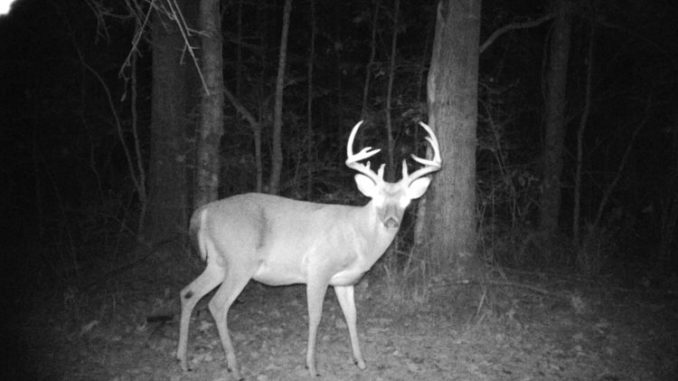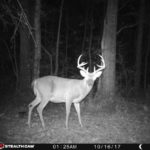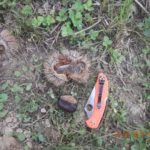
Deer season is in full swing — and now is the time to load up the freezer
No doubt the excitement in the deer hunting fraternity soared when news broke on the big non-typical arrowed by Frank Sullivan in October. The buck will easily make the Pope and Young record book, and depending on how the typical frame scores, might surpass the state record for archery-killed non-typicals. This buck was one of those pre-rut bucks that had developed a distinct feeding pattern, which is ideal for a bowhunter.
The November issue of Louisiana Sportsman had stories of a few more nice bow kills. I saw a photo of another non-typical killed in the Port Hudson area, just down the road from the Sullivan buck, so it’s apparent the 2017 season might be a good one.
It would make sense that there are record-class bucks on the landscape. The harvest has been down for several years, the mast crop has been good for the past two years and we had a wet spring and summer making ideal growing conditions for deer browse — all of which work together to produce mature bucks with very desirable antlers.
November was the key month for Area 2 hunters, and December and January — especially January — are the key months for those areas known to produce trophy bucks. Time will tell, and with the high-tech social media outlets available today, word will spread fast. Hunters need to keep in mind that while technology is high speed, a rack must still air dry for 60 days before it can be officially scored for the record books. While most hunters are eager to have their buck green-scored, this score is really meaningless, so be careful about getting caught up in the hoopla of new state records.
Tips to down a big buck
The keys for connecting with a wall hanger are the same year after year; hunt the rut, hunt the cold fronts from start to finish and hunt the food source deer are eating. I made a few squirrel hunts on the Pearl River WMA, and once again this area has a good mast crop. The cow oak trees appeared to be loaded with huge white oak acorns that both deer and hogs relish. The obtusa oaks had acorns, as well as the overcup oak trees. I saw heavy browsing on Smilax (green briar) everywhere I went. The white oak trees are loaded in East Feliciana Parish as well as in other areas in the state. While many hunters just focus on corn feeders, it’s a good idea to check the areas with oaks and look for deer-feeding sign. Don’t overlook pecans and chestnuts either while searching for feeding areas.
Of course, the rut is the key, and while it’s pretty much over for hunters in Area 2, it is just beginning for the eastern half of the state where the breeding is late. Many of the Mississippi delta WMAs have some late season deer hunting and this is the time that public hunters can connect with a trophy.
Food plot plans
The rain that was lacking in September finally arrived in late October, so food plots will provide forage for deer in late December and January. In the Clinton area, we had a 7-inch rain in one night, so our soil moisture was ideal for keeping the forage plantings green. Cold weather will put the deer into feeding mode, and green patches may be the ticket in the late season. Keep in mind that the excellent 2017 growing conditions increased the native forage species in many areas, and these sites need to be checked out. Smilax is a species that will grow in thickets along with honeysuckle. Yellow jessamine vine is another native browse plant that will grow in thickets and will be heavily eaten by deer in the late season.
Preseason scouting is a must for success. Locating feeding areas, thickets where deer might lay up when the pressure increases and developing a hunting strategy will keep you focused as the season progresses. One part of this strategy is to have fallback locations for stands. Deer wise up to permanent stands such as box stands on food plots as the season progresses, and one way to offset this is to select in advance other locations for placement of ground blinds or climbing stands. Anytime you see deer come into a food plot and immediately look at the permanent stand, it’s pretty clear they know the game. Often deer will enter the plot or strip as far away as possible —in this case placing a portable type stand near that location could spell success. Placing several stands on a food in the preseason allows time for deer to become accustomed to them.
Always share your harvest with friends or individuals who do not have the opportunity to harvest game. The Hunters for the Hungry Program is a great outlet for wild game, especially deer. Check out their websites and share your success with others. Introducing your friends to highly nutritious and delicious venison might just get them interested in hunting.
Remembering the Fish Man
The hunting community lost a good friend in October with the passing of Waylan Boley, who was known as “the Fish Man.” Waylan and I grew up in the Bistineau community of Webster Parish, and we were school buddies for 11 years (he was a grade ahead of me). Waylan drowned while running his turtle traps in Bossier Parish. He spent his entire life in the outdoors, hunting and fishing. We shared many trips, and I have good memories of our adventures in the woods and on the water. Waylan began his commercial fishing activities in high school, and spent a lifetime pursuing them. He enjoyed playing baseball, and we spent as much time in the spring and summer playing ball in the cow pastures around our houses as we did on the Heflin ballfield. He was the first person I ever knew who had a Remington Nylon 66 .22 rifle — and he knew how to shoot it. His dad had the reputation for being the best squirrel hunter in the community, and Waylan easily filled his shoes. No doubt Waylan’s son Daniel will continue to hunt on Loggy Bayou WMA, an area that Waylan loved to hunt. The Boley family is a great example of how rich the hunting tradition is in Louisiana.




